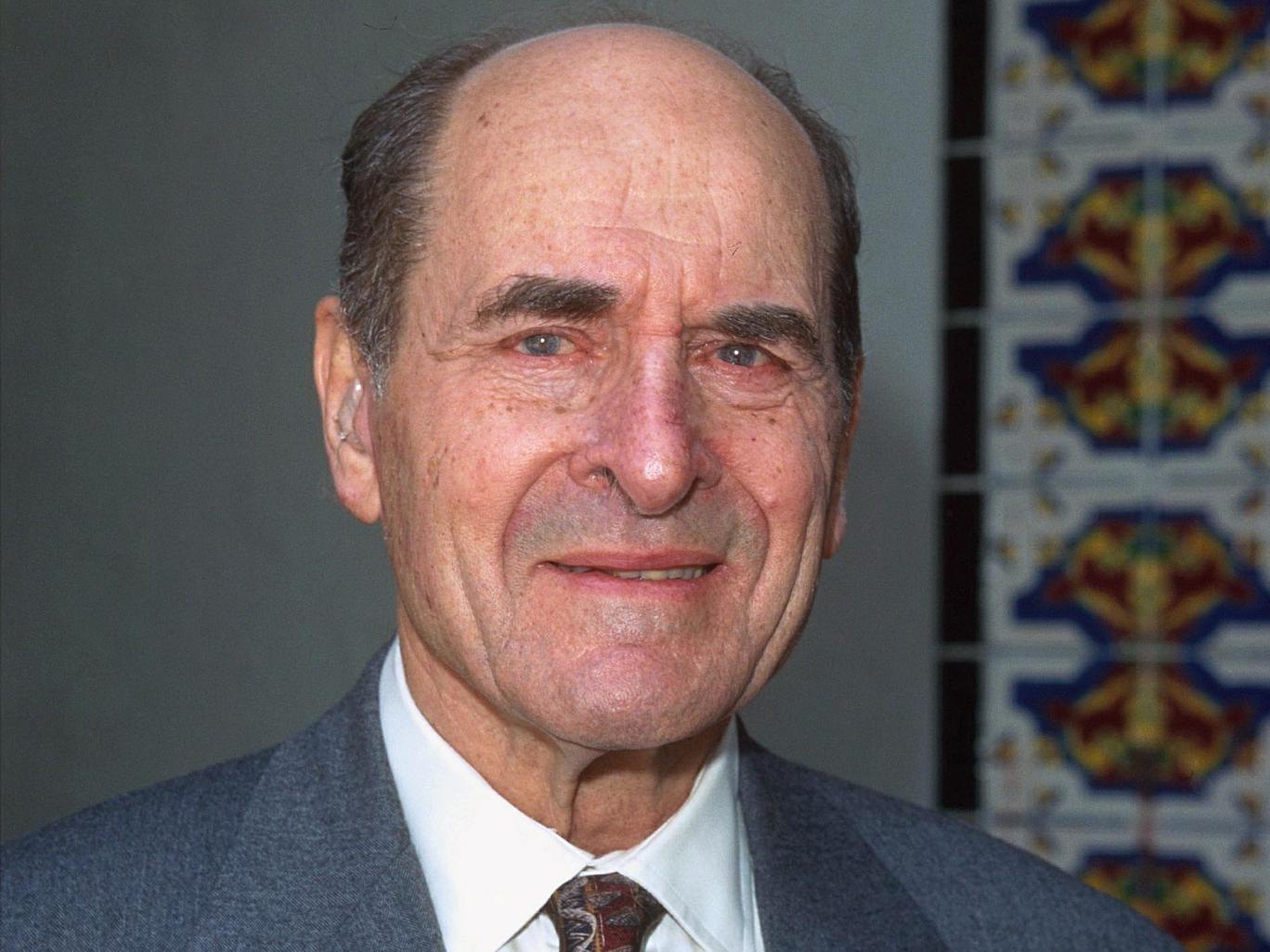Henry Heimlich: American doctor who invented life-saving manoeuvre for choking victims dies aged 96
Family says famed chest surgeon died in hospital following a heart attack

Your support helps us to tell the story
From reproductive rights to climate change to Big Tech, The Independent is on the ground when the story is developing. Whether it's investigating the financials of Elon Musk's pro-Trump PAC or producing our latest documentary, 'The A Word', which shines a light on the American women fighting for reproductive rights, we know how important it is to parse out the facts from the messaging.
At such a critical moment in US history, we need reporters on the ground. Your donation allows us to keep sending journalists to speak to both sides of the story.
The Independent is trusted by Americans across the entire political spectrum. And unlike many other quality news outlets, we choose not to lock Americans out of our reporting and analysis with paywalls. We believe quality journalism should be available to everyone, paid for by those who can afford it.
Your support makes all the difference.Henry Heimlich, the American doctor who invented the life-saving manoeuvre carrying his name, has died.
His son announced his death on Saturday, saying he passed away in the US city of Cincinnati aged 96.
Dr Heimlich died in hospital on Friday night following complications from a heart attack he suffered four days before, his family said.
His son, Phil Heimlich, said: “My father was a great man who saved many lives. He will be missed not only by his family but by all of humanity.”
Dr Heimlich was director of surgery at Jewish Hospital in Cincinnati when he the world-famous technique to dislodge airway obstructions in 1974, using it himself earlier this year to save a choking woman at his retirement home.
“When I used it, and she recovered quickly,” he told a local newspaper at the time. “It made me appreciate how wonderful it has been to be able to save all those lives.”
The chest surgeon told the Associated Press that thousands of deaths reported annually from choking prompted him to seek a solution in 1972.
Over the next two years, he led a team of researchers who tested the technique by putting a tube with a balloon at one end down an anaesthetised dog’s airway until it choked. Dr Heimlich then used the manoeuvre to force the dog to expel the obstruction.
The manoeuvre was adopted by public health authorities, airlines and restaurant associations but his views on how it should be used put him at odds with some in the health field. He
“I know the manoeuvre saves lives, and I want it to be used and remembered,” he said in 2014. “I felt I had to have it down in print so the public will have the correct information.”
The technique has continued to make headlines. Clint Eastwood was attending a golf event in Monterey, California, in 2014 when the actor saw the tournament director choking on a piece of cheese and successfully performed the technique.
Heimlich was proud of some of his other innovations, such as a chest drain valve credited by some with saving soldiers and civilians during the Vietnam War.
But he drew criticism for his theory that injecting patients with a curable form of malaria could trigger immunity in patients with the HIV virus that causes Aids. Medical experts have said injecting patients with malaria would be dangerous and have criticised Heimlich for conducting studies involving malariotherapy on HIV patients in China.
One of his most vocal critics has been his son, Peter Heimlich, who parted ways with his father years ago over a personal rift. He has called many of his father's theories dangerous and spent years challenging many of his claims and trying to discredit them.
The elder Heimlich attended Cornell University undergraduate and medical schools and interned at Boston City Hospital. During the Second World War the US Navy sent him to treat Chinese and American forces behind Japanese lines in the Gobi Desert.
Beginning in the 1950s, he held staff surgeon positions at New York's Metropolitan Hospital and Montefiore Hospital and Medical Center. He later was an attending surgeon at Jewish and Deaconess hospitals in Cincinnati and a researcher at his nonprofit Heimlich Institute.
Heimlich's wife Jane, daughter of the late dance teacher Arthur Murray, died in November 2012. He is survived by two sons and two daughters.
A private family service and burial is planned soon, before a public memorial planned to give friends and admirers a chance to pay their respects.
Additional reporting by AP
Join our commenting forum
Join thought-provoking conversations, follow other Independent readers and see their replies
Comments